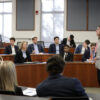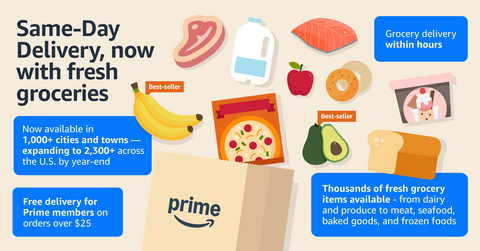April 9, 2020
David A. Wein, M.D. is the Chief of Emergency Medicine at Tampa General Hospital, System Medical Director for TeamHealth, and an Associate Professor at USF Morsani College of Medicine [he’s also my husband].
Rachel Elias Wein: David, we last spoke 10 days ago and then 10 days prior to that. But this is all changing so fast. What are some of the shifts you’ve seen over the past few days?
Dr. David A. Wein: Yes, the situation is changing really quickly. For starters, the way we’re managing patients is changing literally daily. We’re learning more about the causes of patients’ breathing difficulties and how best to approach treatment of those who need respiratory support.
However, with respect to treatment, it’s important to keep certain news reports in perspective. We’re hearing a lot of assertions being made about the efficacy of hydroxychloroquine, azithromycin, zinc, vitamins C or D or some combination of the above. The truth is that, at this point, these are hypotheses and nothing more. The data about these supposed treatments are minuscule. The drugs in question have associated risks.
At Tampa General, we are studying some of these treatments, to be sure. But when you’re consuming news, remember that the questions here are highly complex. If you’re trying to get to the bottom of something, a two-minute interview may fail to capture the full reality.
There was another shift last week when the Centers for Disease Control and Prevention recommended that Americans wear cloth masks in public to reduce the spread of Covid-19. I would stress again that we need to reserve the higher-level surgical masks, such as N95 respirator masks, for healthcare workers. They’re regularly encountering large numbers of patients with high viral loads. Donations of protective equipment can make a big difference for healthcare providers.
REW: One of the other big changes since we last spoke is the level of challenge that we’re seeing in New York, where the healthcare system is normally very capable of caring for its population.
DW: Absolutely. We had the first emergency physician in the United States—Dr. Frank Gabrin, a well-known and respected doctor from New Jersey—pass away. And of course, a number of nurses and others on the front lines have also succumbed to the virus. From the healthcare provider perspective, to see this level of suffering among our colleagues is a big change.
REW: I know that’s something we talk about together, but it can’t be underscored enough.
Switching gears, we see a lot of different terms in the media about peaks and plateaus, herd immunity and so forth. How can we parse this information with a view toward answering practical questions like: ‘When can we go back to work?’ or ‘When will we know it’s OK to reopen the nail salon?’ What do we need to know?
DW: I want to address that directly but let me start with some caveats. Again, the picture is rife with complexity. We are starting to see some decrease in new cases which is the inflection point in the curve but not necessarily the peak. What you really want to see are recoveries starting to outnumber new infections. Even then, though, you’re talking about a long window. The sickest cohort of these patients is in the hospital for weeks.
REW: I would think that geographic variance only adds to the complexity.
DW: Yes, and it depends on a host of factors: when and how local communities have enforced social-distancing and other restrictions; population density; the role of mass transit. Each community is likely to be on its own curve in terms of severity.
Right now, New York appears to be approaching its peak. In speaking with my colleagues in the Northeast, they say that New Jersey is several days to a week behind New York. Other nearby geographies, such as the New York suburbs, may be as well.
In Miami, New Orleans and Detroit, cases are likely on the upswing. Fortunately, domestic travel, which could cause other hotspots, is not significant at this point.
However, let’s get back to your original question about returning to normalcy. Certainly, we all want to go back to work and restart the economy. You have to remember that this is a novel virus. While we can try to compare it to historical situations, there is much we don’t yet know.
What we’re trying to do now is just decrease the infectious rate so that the number of really sick people falls below the threshold of what healthcare systems can handle. For some, it may be tempting to say, ‘When we’re on the downswing of the curve, we can all go back to the way it was before.’ Unfortunately, that is not likely to work.
After 9/11, we closed everything down. Slowly, we started to figure out what to do differently to maintain safety, and now it’s normal to walk through metal detectors at a stadium or take off your shoes in an airport security line. That may be an analogy to keep in mind for the future.
REW: That brings up an important real estate point: Our buildings today may suffer from functional obsolescence. There will be long-term, permanent results of this pandemic in terms of the built environment. It’s just that we don’t yet know exactly what those new requirements will be. We could create sanitation areas at mall entrances, change the inside seating capacity at restaurants or require different approaches to food sanitation.
DW: Medical research and testing could shape some of those methodologies. In the short-term, for example, much will revolve around important questions related to antibodies and immunity: Have those who have been infected by Covid-19 developed lasting antibodies that make it safer for them to go back to work or otherwise be on the frontlines? If so, maybe they could screen people by temperature as they walked into stadiums or other large gathering spots.
In 18 months or two years, hopefully we’ll have a safe and effective vaccine that renders the situation less urgent. Nonetheless, we’re still going to need to incorporate the lessons that we learn from Covid-19. This isn’t the last novel virus we’re going to see.
REW: Again, that you for taking the time, David. Our readers really appreciate hearing your perspective.
DW: No problem, I’m happy to help.








